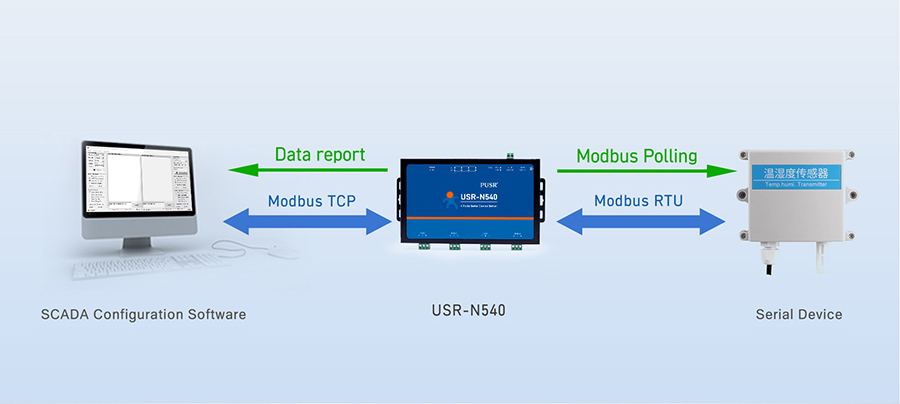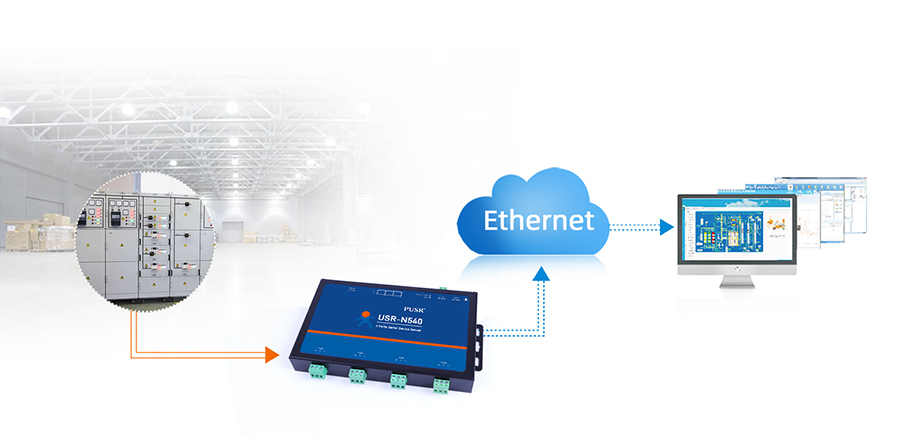In the current wave of Industrial Internet of Things (IIoT), the Modbus protocol stands as a crucial bridge connecting traditional industrial equipment with modern information technology. The Modbus TCP protocol encapsulates the Modbus protocol in the TCP/IP protocol stack, using Ethernet as the physical layer, and achieves communication between devices through TCP connections. It enables the Modbus protocol to operate over Ethernet networks, allowing devices to exchange data over IP networks.
Initially developed by Modicon (now Schneider Electric), the Modbus protocol aims to enable communication between Programmable Logic Controllers (PLCs). It employs a master-slave communication model, where one device serves as the master (Master), initiating requests, and other devices function as slaves (Slave), responding to those requests.
The core of the Modbus protocol is the Application Data Unit (ADU) and the Protocol Data Unit (PDU). The ADU is constructed by adding additional fields to the PDU, defining the data structure of the entire Modbus transaction. The PDU contains specific request or response information, such as device addresses, function codes, and data.
During communication, the master device sends a request message to the slave device, which includes the slave's address, function code, and the data to be read or written. Upon receiving the request, the slave device processes it according to the address and function code, and returns the processing result to the master in the form of a response message. The response message also contains the slave's address, function code, and the processing result.

Advantages:
· Easy to Use: The message format of the Modbus protocol is simple and straightforward, making it easy to implement and debug.
· Strong Scalability: Modbus protocol supports multiple physical layers and transmission methods, such as serial ports and TCP/IP, allowing for flexible configuration based on actual needs.
· Wide Applicability: Modbus protocol has become a standard protocol in the industrial field, enjoying widespread support and application.
Disadvantages:
· Slow Speed: Compared to other high-speed communication protocols, Modbus has a lower data transmission rate, which may not meet the requirements of some applications with high real-time requirements.
· Insufficient Security: Modbus protocol itself lacks encryption and authentication mechanisms, making it vulnerable to hacking attacks and data tampering. Therefore, additional security measures need to be taken in practical applications to ensure data security.
Modbus protocol has extensive applications in industrial automation, intelligent buildings, energy management, and other fields. Here are some typical application scenarios:
1. Industrial Automation: In industrial automation systems, Modbus protocol is used to connect PLCs, sensors, actuators, and other devices to achieve data collection, transmission, and processing. Through Modbus protocol, remote monitoring, fault diagnosis, and parameter adjustment of devices can be realized.

2. Intelligent Buildings: In the field of intelligent buildings, Modbus protocol connects various devices in building automation systems, such as air conditioning, lighting, and security systems. It enables centralized management, energy optimization, and comfort control of these devices.
3. Energy Management: In energy management systems, Modbus protocol connects metering devices such as electric meters, water meters, and gas meters with energy management system servers. It allows for real-time energy data collection, analysis of energy usage patterns, and energy optimization.
The Modbus protocol, as an important protocol in the industrial IoT field, boasts advantages such as simplicity, scalability, and wide applicability. However, its relatively slow speed and insufficient security need to be taken into account in practical applications. Through reasonable configuration and selection of application scenarios, the Modbus protocol can fully leverage its strengths, providing strong support for the intelligent upgrading of traditional industries.